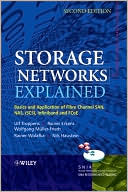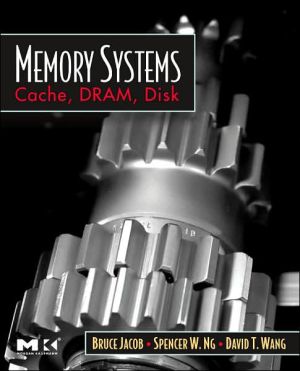Three Hundred Three CD-ROMs to Use in Your Library: Descriptions, Evaluations, and Practical Advice
You want to offer your patrons high-quality information on CD-Roms, but how do you choose from well over 10,000 product on the market when budgets allow for only a few? Librarian and acclaimed software expert Patrick Dewey personally tested several hundred CD-ROMs to develop his evaluative description of more than 300 packages and series serving a range of library needs. He also references dozens more CD-ROM products.
Search in google:
You want to offer your patrons high-quality information on CD-Roms, but how do you choose from well over 10,000 product on the market when budgets allow for only a few? Librarian and acclaimed software expert Patrick Dewey personally tested several hundred CD-ROMs to develop his evaluative description of more than 300 packages and series serving a range of library needs. He also references dozens more CD-ROM products. Library Journal Opening with a short description of general software and hardware requirements for the use of CD-ROMs, this volume contains 303 CD-ROM reviews arranged by subject. This reviewer has a few quibbles with the categories in which some of the items are placed; for instance, why is INSPEC Ondisc in the "Business and Industry" section instead of "Nature and Science" or "Newspaper and Periodical Indexes and Full Text"? This poor organization seems to indicate the author didn't quite thoroughly examine each title. The criteria considered for each CD-ROM are listed in the introduction and include how the item could be used in a library, its advantages over any print alternative, and what size and type library might best use it. Unfortunately, the reviews don't usually reveal the answers to these considerations. Each review follows a standard format listing the title of the CD-ROM, vendor, cost, hardware/software requirements, and comments. Some reviews are only a couple of sentences in length while others run to more than a page. Most fall somewhere in the middle, and occasionally a reference to another review of the product is given. The book concludes with vendor addresses and a glossary. Not recommended. Collection development librarians are better off using LJ's CD-ROM Review column and other current review sources.-Margaret Sylvia, St. Mary's Univ. Academic Lib., San Antonio
IntroductionAlmanacs1Art and Music4Astronomy and Space10Business and Industry15Children's Literature32Computers and Software37Cookbooks47Desktop Publishing Accessories51Dictionaries59Education and Careers64Encyclopedias70Entertainment, Games, and Humor76Film80Health, Medicine, and Nutrition86History and Genealogy97Home and Automotive Improvement106Language109Law114Library117Literature124Magazines on Disc137Maps140Military144Nature and Science146Newspaper and Periodical Indexes and Full Text152Recreation and Travel174Religion179Sociology182Telephone Directories187United States Information and Statistics191Utilities196App. A Discount and Mail Order CD-ROM Vendors203App. B Vendor Name and Address List205App. C Computer Periodicals of Interest217Glossary219Bibliography227Index of CD-ROMs231
\ Library JournalOpening with a short description of general software and hardware requirements for the use of CD-ROMs, this volume contains 303 CD-ROM reviews arranged by subject. This reviewer has a few quibbles with the categories in which some of the items are placed; for instance, why is INSPEC Ondisc in the "Business and Industry" section instead of "Nature and Science" or "Newspaper and Periodical Indexes and Full Text"? This poor organization seems to indicate the author didn't quite thoroughly examine each title. The criteria considered for each CD-ROM are listed in the introduction and include how the item could be used in a library, its advantages over any print alternative, and what size and type library might best use it. Unfortunately, the reviews don't usually reveal the answers to these considerations. Each review follows a standard format listing the title of the CD-ROM, vendor, cost, hardware/software requirements, and comments. Some reviews are only a couple of sentences in length while others run to more than a page. Most fall somewhere in the middle, and occasionally a reference to another review of the product is given. The book concludes with vendor addresses and a glossary. Not recommended. Collection development librarians are better off using LJ's CD-ROM Review column and other current review sources.-Margaret Sylvia, St. Mary's Univ. Academic Lib., San Antonio\ \ \ \ \ BooknewsDescriptions of CD-ROM packages and series will aid librarians in choosing multimedia material in subjects such as art and music, business, careers, education, health, literature, maps, government data, and newspaper and periodical indices. Entries include information on vendor price, platform and hardware requirements, and availability of network versions, and offer comments on content, search capabilities, and level of use. Contains a glossary, and lists vendors and related periodicals. Annotation c. Book News, Inc., Portland, OR (booknews.com)\ \








